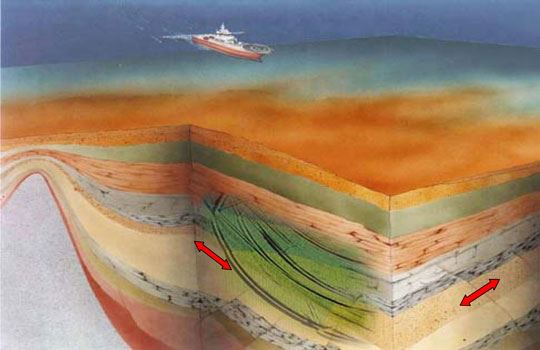
One important element in the interpretation of seismic data is velocity-depth trends for shales. Models for the dependence of velocity with burial depth, mechanical compaction and diagenesis will be developed. Mechanical compaction is dependent on the clay content of the sediments. Smectite illitization depends on the temperature history that the sediment has experienced, as well as the mineral content of the shales. The shale properties will be integrated with recently published rock physics models of Smectitic and Illitic shales.
The main deliverable will be a software model for prediction of pore pressures using seismic velocity data as input. Additional deliverables are models for velocity-depth trends in shales. Other applications of velocity-depth trend models include seismic processing, velocity estimation from seismic, AVO-analysis, and estimates of erosion magnitudes.
Methodology
The main elements of the data and work flow intended in this project is illustrated in the figure below. On the left side of the flow diagram, Pressim takes interpreted seismic horizons as input for building a lithology model. This serves as a basis for modeling sediment compaction and diagenesis, which then is used to model 3D fluid flow and pressure development through time. Measured pore pressures in wells are used to calibrate the Pressim model.

The Pressim compaction and diagenesis models will be combined with relevant rock physics models to predict local velocity-depth trends for normally-pressured sediments. Log-data from wells will be used to calibrate the velocity-depth models.
On the right side of the diagram, either Optaprox or Stereotomography will take the prestack seismic data as input to estimate velocity from reflection travel-times. The obtained velocity cube will be interpreted using the predicted normal velocity-depth trends to come up with an initial prediction of present day pore pressures. This initial prediction will be coupled with the Pressim fluid flow model to produce a final pore pressure prediction away from well-control both through geologic time and at present day.
The project was sponsored by Statoil ASA, Total Norge E&P AS, BG Norge Ltd and Det norske oljeselskap, in addition to the Norwegian Research Concil.

